
According to the Quang Tri Province Civil Defense Command, by 11:30 a.m. on November 17, heavy rain had flooded and cut off 53 locations (including 3 national highways, 9 provincial roads, and 41 communes), and 5 landslides (Huong Hiep and La Lay communes). Continuous heavy rain also flooded 190 households/644 people, mainly in Huong Hiep and Nam Hai Lang communes; 1 house in Khe Sanh commune had a landslide; more than 4,490 households (in Khe Sanh, Dakrong, Huong Hiep, and Ba Long communes) lost power.
The whole province has 3 schools in Nam Hai Lang and Ba Long communes that were deeply flooded and had to let students stay home to ensure safety. In vulnerable and dangerous areas, the government, agencies and functional forces evacuated and relocated 217 households/813 people in Huong Phung and Ba Long communes to high and safe places.
According to the forecast of the authorities, due to the influence of strong cold air combined with the activity of the East wind zone, from the morning of November 17 to November 19, in Quang Trinh province there will be moderate rain, heavy rain, and very heavy rain in some places. In particular, in the North of the province, it will be from 70-200mm; in some places over 220mm, in the South, it will be from 120-250mm, in some places over 300mm.
To proactively prevent and respond to heavy rains and floods, the People's Committee of Quang Tri province has issued a telegram requesting localities and units to urgently deploy measures and tasks to ensure the safety of people's lives and minimize property damage caused by floods.
Accordingly, the province requires communes, wards and special zones in the area to maximize the motto and actions of "4 on-the-spot"; proactively develop and promptly operate plans for natural disaster prevention and control according to each risk level; ensure smooth communication, uninterrupted command and control; clearly assign responsibilities to each force, organization and individual in handling emergency situations. At flooded and vulnerable points, localities need to organize guarding, put up warning signs, set up barriers to strictly prohibit people and vehicles from passing through when safety is not guaranteed. At the same time, it is necessary to grasp the living situation of people in the area to have measures to remind and strictly prohibit people from going into the forest, fishing, collecting firewood and wood on rivers, streams/lakes and lagoons when there are floods. In particular, localities absolutely prohibit people and vehicles from crossing flooded areas with fast-flowing water, moving on waterways without safety equipment (life buoys, floating materials).
At the same time, localities organize to review and carefully inspect areas at risk of flooding, inundation, and landslides (especially mountainous areas, along rivers and streams, urban areas, low-lying residential areas, construction works, etc.); be vigilant, have response plans ready, organize to evacuate people from dangerous areas in a timely manner, ensuring the safety of people's lives and property. Proactively mobilize local forces to help people repair houses, restore essential infrastructure, clean up the environment, and prevent epidemics after floods.

In dangerous areas, flooded areas, affected by floods, the education sector and relevant localities, according to their authority and based on the specific situation, proactively let students stay home from school to ensure absolute safety for teachers and students. The Department of Agriculture and Environment closely monitors the situation, directs dam owners and investors of irrigation works to deploy plans to ensure safety of works; directs the operation of reservoirs in accordance with regulations; guides localities to handle, repair and ensure safety of dikes and irrigation dams. Research and propose support solutions for plant varieties, livestock, aquatic products, and agricultural materials to help urgently overcome damage caused by natural disasters.
Faced with the complicated weather situation, the Department of Construction needs to proactively review and evaluate all routes, slopes, slopes, weak roadbed areas at risk of landslides, collapses, etc., promptly isolate dangerous areas, put up warning signs, set up barriers, and proactively prohibit people and vehicles from passing through before taking safety measures. In addition, the unit needs to urgently inspect and repair damaged traffic infrastructure, bridges, inter-commune and inter-regional roads to ensure smooth traffic.
The Provincial Military Command, the Police, and the Provincial Border Guard Command need to prepare plans and proactively arrange forces and means to deploy response, rescue, and relief work when required.
The province also requested relevant units, departments, branches, localities and people to regularly update and closely monitor the situation of rain, floods and inundation, promptly deploy prevention and response work to minimize damage caused by natural disasters.
Source: https://baotintuc.vn/thoi-su/quang-tri-mua-lon-gay-ngap-chia-cat-hon-50-diem-nhieu-ho-matdien-20251117134304018.htm




![[Photo] General Secretary To Lam and National Assembly Chairman Tran Thanh Man attend the 80th Anniversary of the Traditional Day of the Vietnamese Inspection Sector](https://vphoto.vietnam.vn/thumb/1200x675/vietnam/resource/IMAGE/2025/11/17/1763356362984_a2-bnd-7940-3561-jpg.webp)



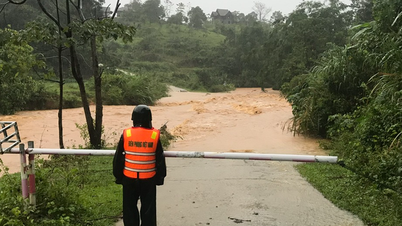






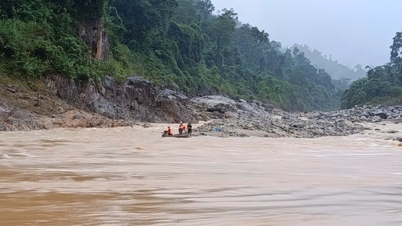

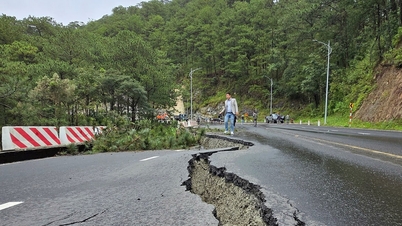



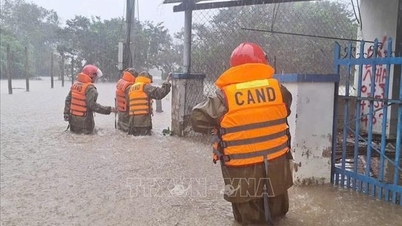







































































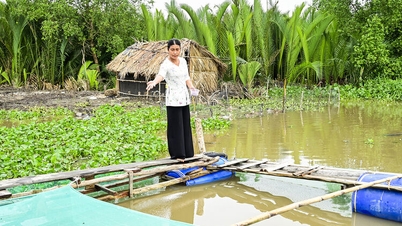
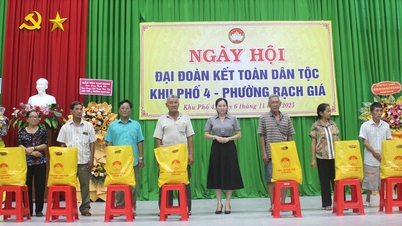















Comment (0)